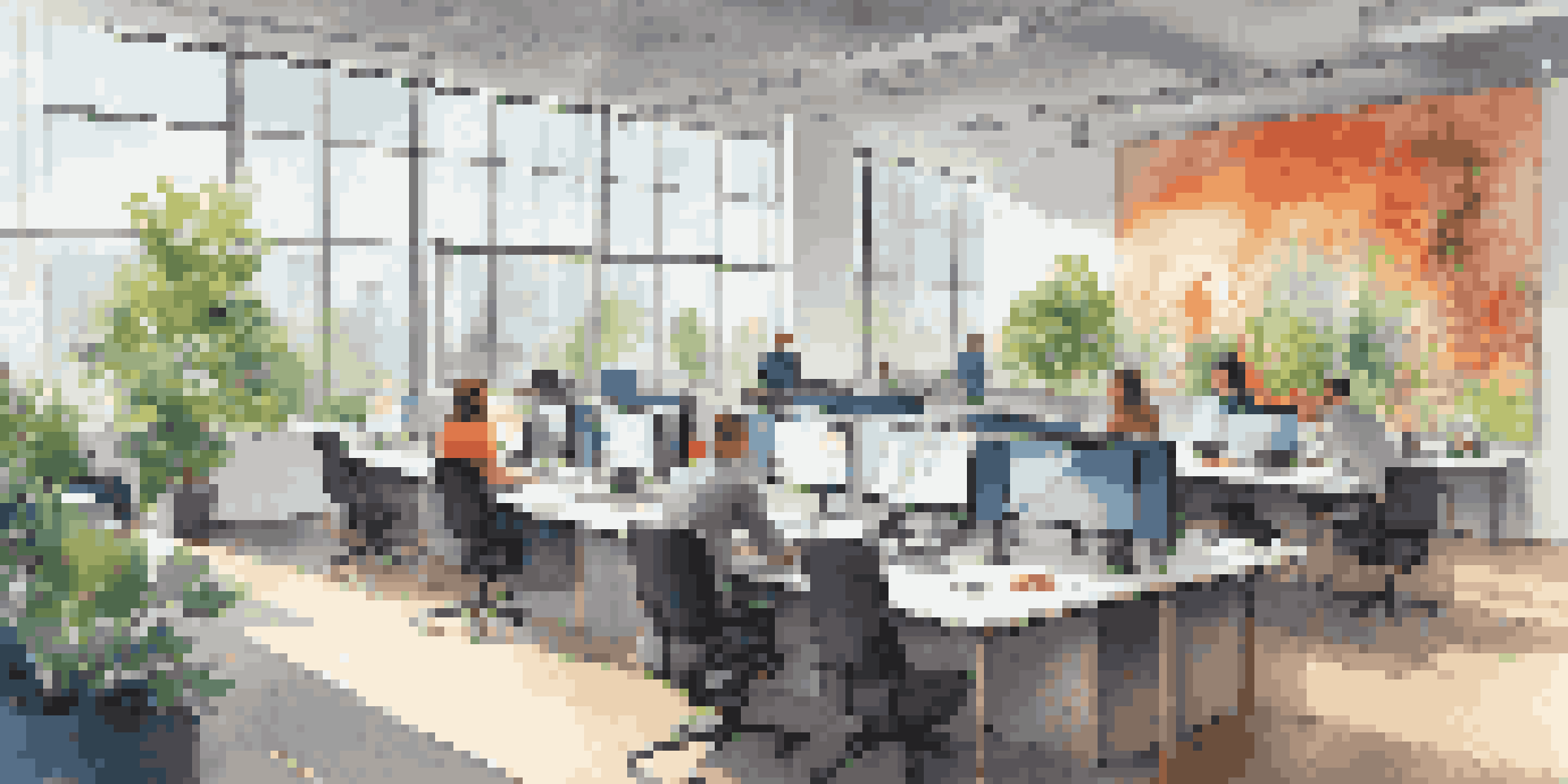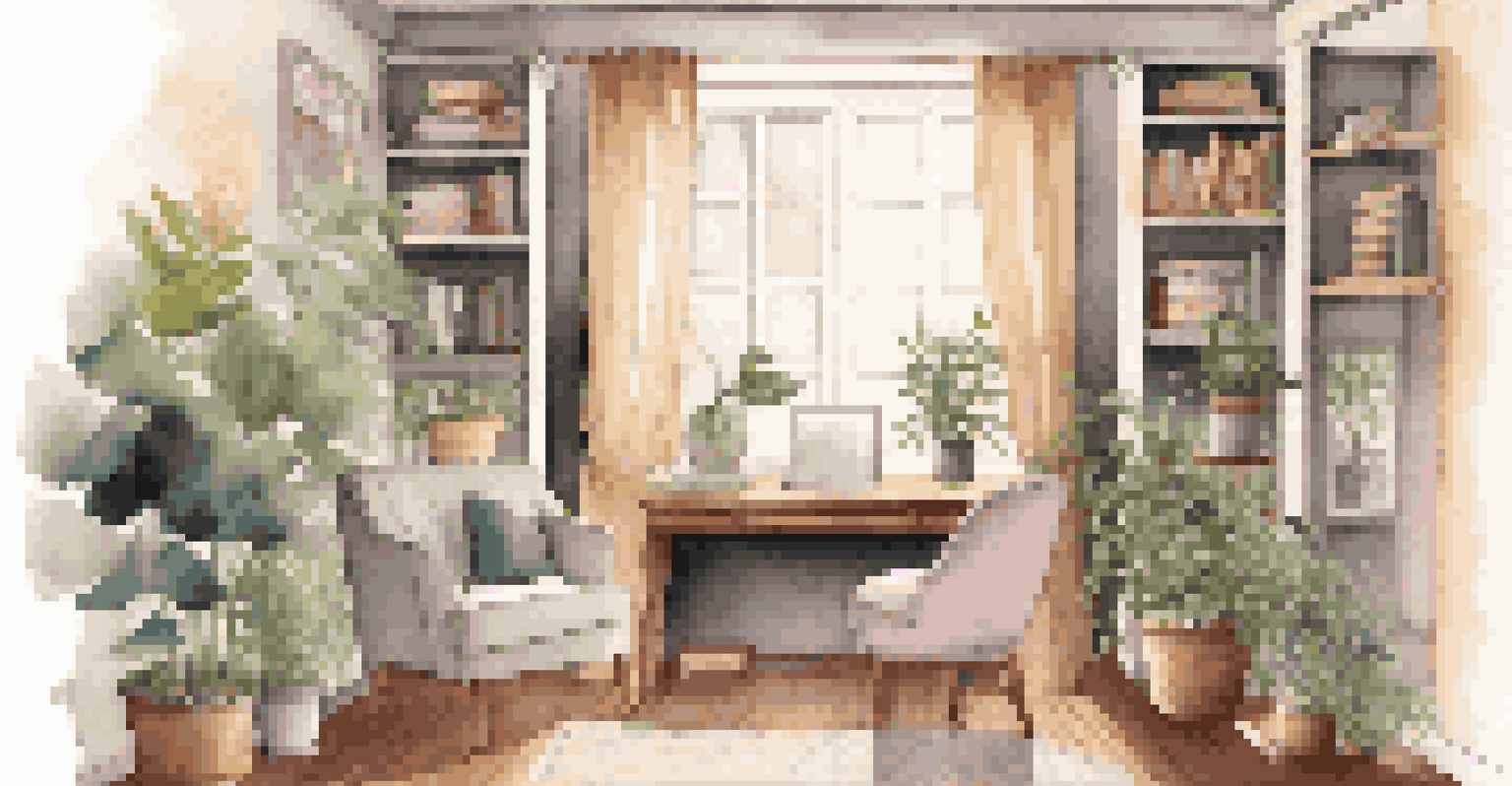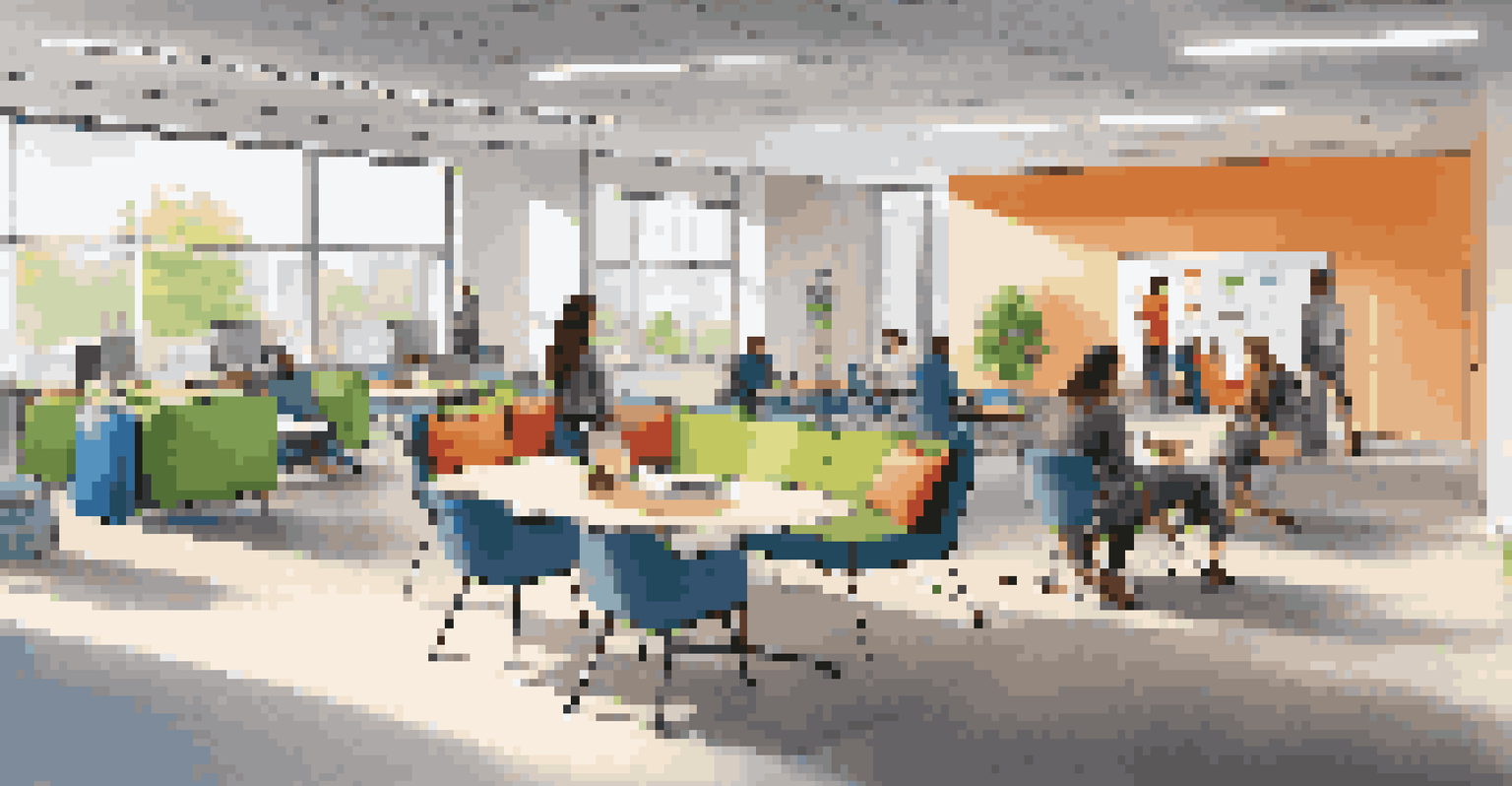Balancing Aesthetics and Functionality in Office Design

Understanding the Importance of Office Design
Office design is more than just creating a pretty space; it’s about fostering an environment that encourages productivity and collaboration. A well-designed office reflects the culture of a company and can significantly impact employee morale. Just like a good recipe, the right blend of elements can create an atmosphere where creativity thrives and tasks are executed efficiently.
Design is not just what it looks like and feels like. Design is how it works.
When employees feel comfortable and inspired in their surroundings, they are more likely to be engaged and productive. Think of it as creating a workspace that feels like a second home, where people want to come to contribute their best work. This balance between aesthetics and functionality is crucial for attracting and retaining talent in a competitive job market.
Moreover, the design of an office can influence the behaviors and interactions of employees. For instance, open spaces may encourage collaboration, while quiet areas can provide the focus needed for deep work. Striking the right balance can lead to an invigorating work environment.
The Role of Aesthetics in Office Design
Aesthetics play a significant role in how employees perceive their work environment. A visually appealing office can create a positive first impression for clients and visitors while also boosting employee pride. Just like an art gallery, the choice of colors, furniture, and decor can evoke emotions and set the tone for the workplace culture.

Incorporating elements like natural light, greenery, and art can enhance well-being and reduce stress. For example, a splash of color on the walls or vibrant artwork can energize a dull space, making it more inviting. These aesthetic choices can also reflect the brand identity, helping employees feel connected to the company's mission and values.
Office Design Boosts Productivity
A well-thought-out office design fosters an environment that enhances employee comfort, creativity, and collaboration.
However, it’s essential to remember that aesthetics should not overshadow functionality. A beautifully designed office that lacks practicality can hinder productivity and create frustration among employees. The key is to ensure that while you beautify the space, you also cater to the needs of those who work within it.
Functionality: The Backbone of Office Design
Functionality is at the heart of effective office design. It involves creating spaces that support the daily tasks of employees, ensuring that they have the tools and resources they need at their fingertips. Just as a well-oiled machine runs smoothly, a functional office allows for efficiency and ease of movement.
The best way to predict the future is to create it.
Consider the layout: are workstations ergonomically designed? Is there adequate space for collaboration, meetings, and quiet work? Functional design anticipates the needs of employees, making their work life easier and more productive. This might mean incorporating adjustable desks, soundproof meeting rooms, or communal areas for brainstorming sessions.
Balancing functionality with aesthetics ensures that every element of the office serves a purpose while contributing to an attractive overall look. When both aspects work hand-in-hand, employees can flow seamlessly from one task to another without unnecessary disruption, leading to enhanced performance.
Creating Flexible Workspaces
In today's dynamic work environment, flexibility is key. Offices are no longer just about fixed desks and cubicles; they need to adapt to various working styles and needs. Think of it like a Swiss Army knife, where different tools can be used for different tasks.
Flexible workspaces can include movable furniture, multipurpose rooms, and quiet zones that can be reconfigured as needed. This adaptability allows employees to choose environments that suit their tasks, whether it's a collaborative brainstorming session or focused individual work. It’s about giving people ownership over how and where they work.
Blending Aesthetics and Functionality
Successful office design balances visual appeal with practical features to ensure a productive workspace that meets employee needs.
Such designs not only cater to individual preferences but also foster a culture of collaboration and innovation. When employees have the freedom to choose their workspace, they feel more in control and engaged. This leads to a more vibrant and productive office atmosphere.
Incorporating Technology in Office Design
Technology is increasingly becoming a vital component of office design. From smart lighting systems to integrated video conferencing tools, incorporating tech can enhance both aesthetics and functionality. Imagine walking into an office where every device seamlessly connects, creating a harmonious workflow.
By using technology to monitor energy usage and optimize space, companies can create more efficient environments that are also visually appealing. Digital displays, for instance, can enhance aesthetics while providing valuable information such as project updates or company announcements. This fusion of tech and design adds a modern touch to the workplace.
However, while integrating technology, it’s essential to ensure it does not overwhelm the space. The goal is to create an environment where technology enhances the user experience without becoming a distraction. By thoughtfully incorporating tech elements, offices can achieve a balance that supports both productivity and aesthetic appeal.
Sustainability in Office Design
Sustainability is becoming an essential consideration in modern office design. Employees today are increasingly aware of their environmental impact, and a sustainable office can enhance a company’s reputation. Imagine walking into an office filled with natural light, recycled materials, and energy-efficient appliances; it sends a powerful message about the company’s values.
Incorporating sustainable practices not only benefits the planet but can also improve employee well-being. Elements like biophilic design, which connects people with nature, can reduce stress and increase productivity. For instance, plants can purify the air and create a calming atmosphere, while the use of natural materials can enhance the aesthetic appeal.
Emphasis on Flexibility and Tech
Modern offices are embracing flexible workspaces and advanced technology to create adaptable environments that support diverse working styles.
Ultimately, a commitment to sustainability can harmonize aesthetics and functionality by creating a workspace that is both beautiful and responsible. Companies that prioritize eco-friendly designs show that they care about their employees and the world around them, fostering a deeper sense of purpose.
The Future of Office Design
As work culture continues to evolve, so too will office design. The future likely holds even more emphasis on balancing aesthetics and functionality, driven by changing employee expectations and technological advancements. Imagine a workspace that adapts in real-time to the needs of its users – that’s the direction we’re heading.
Trends like remote work and hybrid models are reshaping how we think about office spaces. Designers will need to create environments that support both in-person collaboration and remote connectivity. This could mean more communal spaces and technology that bridges the gap between remote and on-site employees.

The ultimate goal will always be to foster a productive, engaging, and aesthetically pleasing environment. By staying attuned to these trends and focusing on the balance between beauty and practicality, businesses can create offices that not only meet current needs but also inspire future innovation.